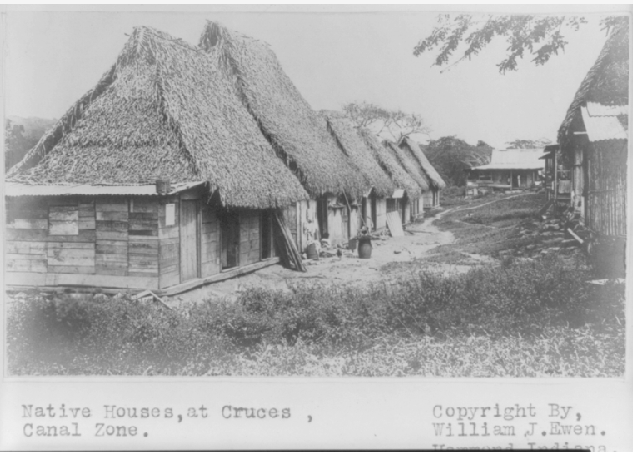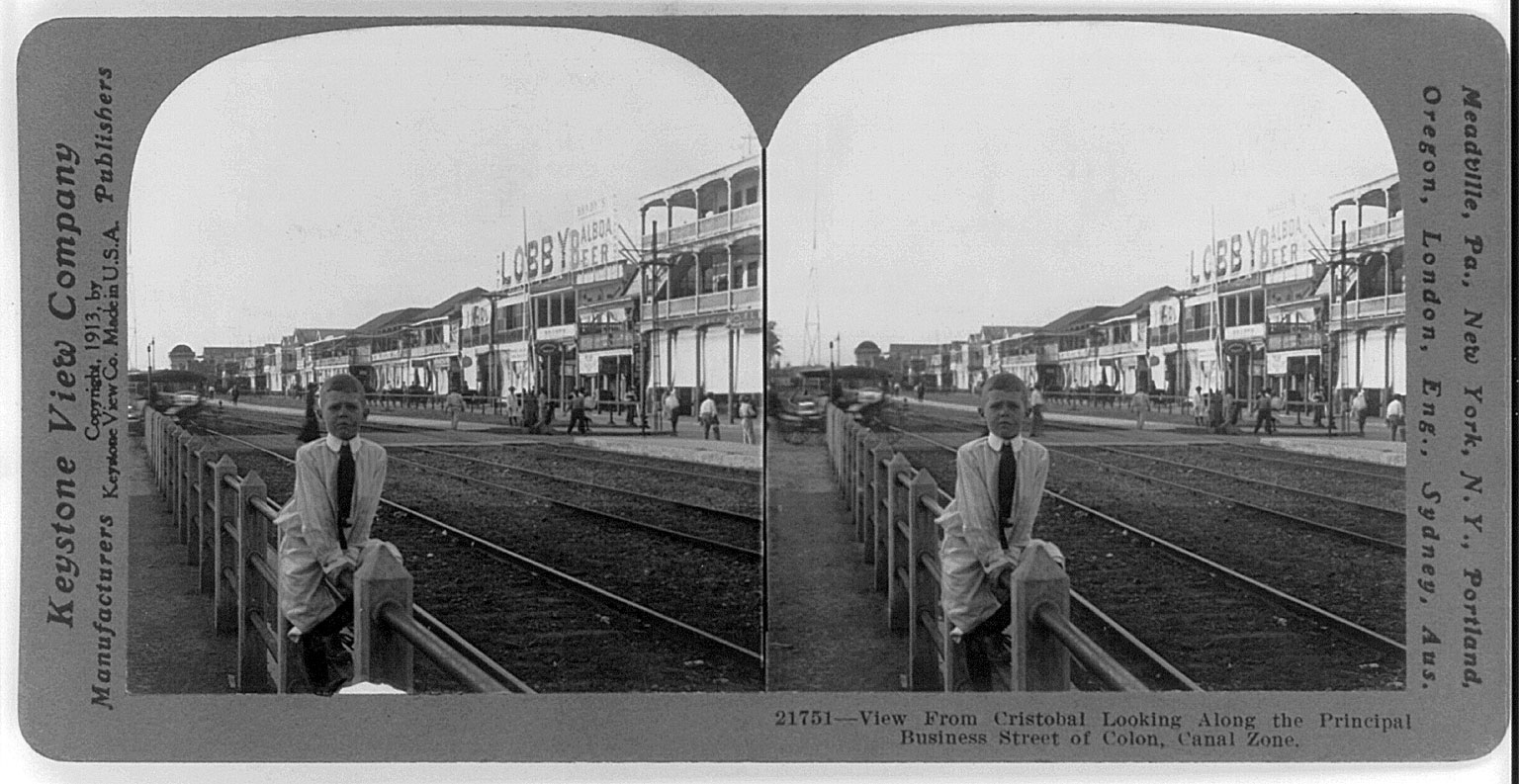In the summer of 1914, the first ship steamed between the Atlantic and Pacific Oceans over a fifty mile stretch that had been terra firma a mere ten years earlier. The Panama Canal was a marvel of modern engineering that fulfilled a dream as old as the Age of Discovery, a convenient inter-oceanic waterway that avoided the dangerous and lengthy passage around Cape Horn. After years of futile voyages in search of the Northwest Passage, capitalists, engineers, and politicians from Europe and the United States, inspired by ideals of progress and modernity, decided to carve a marine path through Central America.
Although both Nicaragua with its large central lake and Mexico's Isthmus of Tehuantepec were also viable options, Panama became the focus of international efforts that would forever change navigation, commerce, and international political relations. As seen in the satirical cartoon in the sources, France attempted to dig a canal through Panama as early as 1880, but disease and lack of funding forced them to terminate their project with only a quarter of the work complete. By the end of the nineteenth century, however, the United States would become the power most dedicated to constructing a canal and, as a result, began to exert imperialistic influence throughout the entire region. This increasing involvement in Latin America and the Caribbean was facilitated by advanced techniques for dealing with tropical diseases. The experiments of Juan Finlay and Walter Reed in Cuba that determined the vector and inoculation techniques for yellow fever were especially important in this regard.
In 1903, the U.S. supported a Panamanian revolt against Colombia, which had hitherto controlled the isthmus, and in a 1904 treaty seized legal rights to the Canal Zone, a ten mile stretch of land surrounding the canal begun by the French on both sides. According to Walter LaFeber, an historian of U.S. foreign relations, Panama was from that moment on a de facto colony of the U.S., nominally independent but subject to paternalism and policies that favored U.S. interests (LaFeber 1989). Panama and its canal became, in effect, U.S. tools that served their goals of increased trade, naval power, and scientific progress.
The actual construction of the canal remains one of the most remarkable feats of engineering in world history, combining new technologies, massive amounts of manpower, and terraforming. Trains provided the workers with the necessities of life and moved the millions of tons of earth that was dug up each year. They also served to transport equipment, such as the steam shovel in this topic's sources, which made the U.S. canal project far more efficient than that of the French. The financial and human costs, however, remained staggering. Between the French and U.S. digs, the canal cost over six hundred million USD. More significantly, the U.S. reported 5,609 deaths among its workers, a large figure that is nonetheless dwarfed by the 20,000 or more who died while the dig was led by the French. Although the unification of the two oceans was the most significant change in Panama's landscape, the canal also altered regional ecosystems by damming rivers and digging canals to supply the canal's locks with the requisitely massive amounts of water.
After the completion of the waterway, the Canal Zone became an area of intense segregation, where the whites who worked for the canal or the U.S. military became a sort of colonial racial elite. As Stephen Frenkel noted, these elites justified their privileged status with the "scientific" tenets of environmental determinism, a concept in early twentieth century geography that claimed that the environment in which a people lived predetermined the population's capacity for intelligence, civilization, and labor. Thus although whites were naturally stronger, they were out of their element in the tropics and their superior intelligence designated them for managerial positions while blacks, imported from the West Indies to build the canal, were slow-witted and "naturally" designated to perform menial work. The photographs in the source of the white and non-white parts of the canal zone show the disparity in wealth between elite and local areas of the Zone, which were euphemistically categorized as "gold" (white) and "silver" (non-white), and the areas between them were often patrolled by police (Frenkel 1992).
By the 1960s, however, Panamanians resented U.S. domination. Discontent and rioting led to a series of negotiations that culminated in the Carter-Torrijo treaty of 1977, in which the U.S. agreed to remove its personnel and give the canal to Panama by the year 2000. On Dec 31, 1999, Panama gained control of its greatest asset. Nevertheless, Panama has been left with a political, cultural, and physical legacy of colonialism, without ever having been legitimately colonized. During its years in Panama, the U.S. tested massive amounts of chemical weapons, including mustard gas and Agent Orange, and then left the country without bothering to clean up its depleted uranium or an estimated 100,000 pieces of unexploded ordnance (Lindsay-Poland 2003).
In a situation perhaps unique to history, a technological endeavor simultaneously created a new country while relegating it to unofficial foreign rule. The Panama Canal exemplifies the interconnectedness of science and politics and is a stark reminder of the power that advanced nations can exert over weaker ones in the name of progress, profit, or "the greater good."
Questions for further exploration:
- In the early twentieth century, the U.S. exerted tremendous influence throughout Latin America under the auspices of scientific progress. Compare the Panama Canal with other scientific pursuits, such as those of the Rockefeller Foundation. Taken on the whole, does U.S. science in Latin America constitute a form of imperialism?
- The U.S. built canal continued the unfinished work of the French during the 1880s and, around the turn of the century, Latin American countries began looking to the U.S. as the paradigm of modernity in medicine and other disciplines, a role previously filled by France. How is the example of the Panama Canal an illustration of this trend?
- Watch the video "Through the Canal Bottom" in the sources. The use of a motion picture and statistics-laden voiceover can be viewed as conveying undeniable truths, which, in a sense, they are. What else, though, can one "read" from this video through what it does (and does not) show and talk about? Consider such issues as landscape, imperialism, labor, race, and gender.
- The sources "The European Plan" and "The Proposed Nicaragua Canal" both express explicit and implicit U.S. ideas about Latin America and the role that Europe, the U.S., and modern science can and should have there. What are some of the assumptions in these two sources?
- How have ideas concerning the role of humans in shaping the landscape changed since the construction of the Panama Canal. Can any of these changes be traced to the Canal or Latin America in general?
Further Reading:
Clayton, Lawrence A. "The Nicaragua Canal in the Nineteenth Century: Prelude to American Empire in the Caribbean." Journal of Latin American Studies. 19: 2 (November 1987): 323-352.
Frenkel, Stephen. "Geography, Empire, and Environmental Determinism." Geographical Review. 82: 2 (April 1992): 143-153.
LaFeber, Walter. The Panama Canal: The Crisis in Historical Perspective. New York: Oxford University Press, 1989.
Lindsay-Poland, John. Emperors in the Jungle: The Hidden History of the U.S. in Panama. Durham: Duke University Press, 2003.
Major, John. Prize Possession: The United States and the Panama Canal, 1903-1979. Cambridge: Cambridge University Press, 1993.
McCullough, David. The Path Between the Seas: The Creation of the Panama Canal, 1870-1914. New York: Simon and Schuster, 1977.





